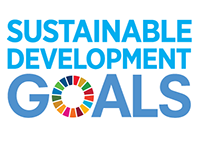Inter and Intra Provincial Migration (Ages 20-34)
Definition:
Net Interprovincial and Intraprovincial Migration, ages 20-34
Methods and Limitations:
Intraprovincial migration represents movement from one geographic area to another geographic area within the same province or territory. For example, someone moving from Vancouver to Victoria is considered an intraprovincial migrant). Net intraprovincial migration represents the total number of people moving into a geographic area from the same province, minus the number of people leaving that geographic area to a different geographic area in the same province. For example, the net intraprovincial migration of Victoria would be all the people who moved to Victoria from somewhere else in British Columbia, minus all the people who left Victoria to live somewhere else in British Columbia.
Interprovincial Migration represents movement from one geographic area to another area in a different province or territory. For example, someone moving from Victoria to Calgary would be an interprovincial migrant. Net interprovincial migration represents the total number of people moving into a geographic area from a different province or territory, minus the number of people leaving that geographic area to a different province or territory. For example, if 100 people moved away from Victoria to live in difference provinces, but 150 people moved to Victoria from outside of British Columbia, the net interprovincial migration for Victoria would be 50.
It is important to note that interprovincial and intraprovincial migration are one dimension of population change. Immigration (coming from a different country), emigration (leaving to a different country), births and deaths are other aspects of population change that are not accounted for in this indicator.
Population estimates based on the Standard Geographical Classification (SGC) 2021 as delineated in the 2021 Census.
The estimates for net interprovincial migration are final up to 2021/2022 and preliminary for 2022/2023.
The estimates for net intraprovincial migration are final up to 2021/2022 and preliminary for 2022/2023. For Quebec’s census metropolitan areas and census agglomerations, preliminary and final data (from 2001/2002) are taken from the estimates of “l’Institut de la statistique du Québec” (ISQ). In rare instances, it may have been necessary to modify ISQ’s estimates in order to avoid generating negative populations with the cohort component approach. For all census agglomerations the method to calculate intraprovincial migration is not the same for periods starting in 2011/2012 and for past periods. Similarly, historical trends for intraprovincial migration must be interpreted with caution for periods that predate the creation of any given census agglomerations.
Sources:
Canada, Province and CD: Statistics Canada. Table 17-10-0153-01 Components of population change by census division, 2021 boundaries
CMA and CA: Statistics Canada. Table 17-10-0149-01 Components of population change by census metropolitan area and census agglomeration, 2021 boundaries
ER: Statistics Canada. Table 17-10-0151-01 Components of population change by economic region, 2021 boundaries
 Inter and Intra Provincial Migration (Ages 20-34) in the Sustainable Development Goals
Inter and Intra Provincial Migration (Ages 20-34) in the Sustainable Development Goals
Click on the SDG to reveal more information